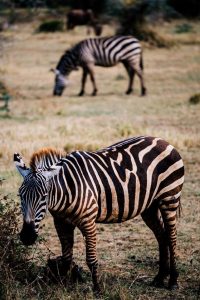Climatic Factors Affecting Mount Kilimanjaro Ascents
Mount Kilimanjaro, the highest peak in Africa, attracts thousands of climbers each year seeking to conquer its majestic summit. One of the key factors that can make or break a successful ascent is the weather conditions on the mountain. Understanding the climatic factors affecting Mount Kilimanjaro ascents is crucial for anyone planning to undertake this challenging adventure.
The weather on Mount Kilimanjaro is influenced by a variety of factors, including its proximity to the equator, its high altitude, and its unique microclimates. As climbers ascend the mountain, they will encounter different weather patterns and conditions that can change rapidly. It is essential to be prepared for all types of weather, from scorching sun to freezing temperatures and everything in between.
The team at Sunset Africa Safari, a reputable tour operator that specializes in Kilimanjaro climbs, emphasizes the importance of understanding the climatic factors that can impact your ascent. They recommend that climbers be prepared for rain, snow, wind, and extreme temperatures at various points along the route. Proper gear, clothing, and equipment are essential to ensure a safe and successful climb.
Understanding Weather Patterns on Mount Kilimanjaro
Mount Kilimanjaro has its own unique weather patterns that climbers must be aware of before embarking on their journey. The mountain has five distinct climate zones, each with its own weather conditions. These zones include the tropical rainforest, moorland, alpine desert, arctic, and summit zones.
In the lower elevations of the mountain, climbers can expect warm temperatures and high humidity in the tropical rainforest zone. As they ascend higher, temperatures drop significantly, and the landscape changes to moorland and alpine desert, where winds can be strong and temperatures can fluctuate rapidly. In the arctic and summit zones, climbers will encounter freezing temperatures, snow, and ice.
The team at Sunset Africa Safari recommends that climbers be prepared for all types of weather conditions by packing appropriate gear such as waterproof jackets, insulated layers, and sturdy hiking boots. It is also important to acclimatize properly to the altitude to avoid altitude sickness, which can be exacerbated by extreme weather conditions.
Ultimately, the success of a Mount Kilimanjaro ascent depends on careful planning, preparation, and knowledge of the weather conditions on the mountain. Sunset Africa Safari offers expert guides and support staff who are experienced in navigating the mountain’s ever-changing weather patterns. For more information about booking a Kilimanjaro climb with Sunset Africa Safari, please contact info@sunsetafricasafari.com.
In conclusion, being aware of the climatic factors affecting Mount Kilimanjaro ascents and understanding the weather patterns on the mountain are essential for a safe and successful climb. With the right preparation and guidance, climbers can conquer this iconic peak and experience the adventure of a lifetime.


